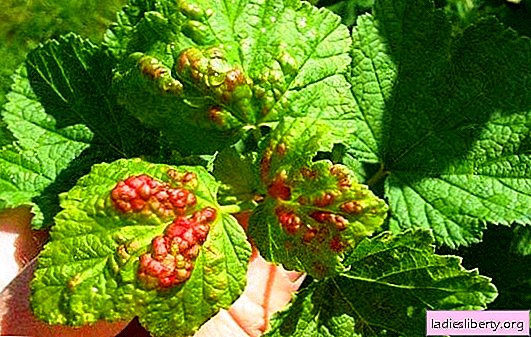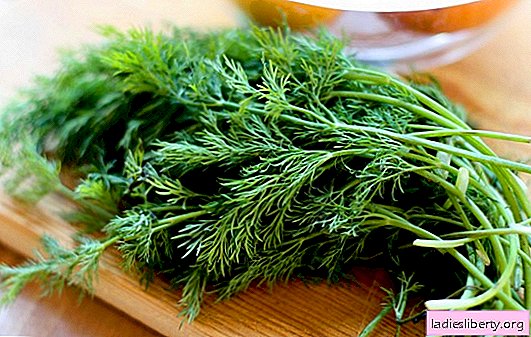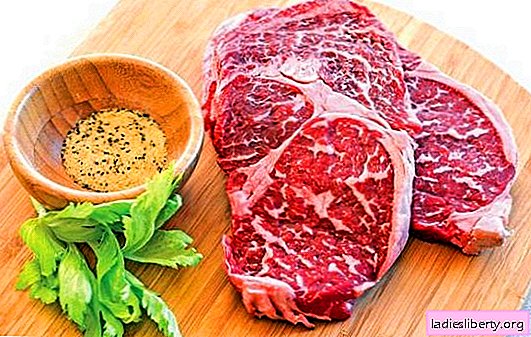
Currants are unstable to various diseases. Most often, the bush is exposed to fungal and viral diseases, which reduce the winter hardiness of the plant, yield and lead to death.
One of these diseases is anthracnose of currant. What causes the ailment? How to recognize the first signs of the disease? How to treat currants? All these questions interest the gardener who wants to grow a healthy garden.
What is anthracnose in currants
This insidious disease affects the leaves of blackcurrant, and on the redcurrant petioles, fruits and stalks suffer. Currant in anthracnose is a fungal disease that begins to develop with the onset of warm days, usually in May.
Small brown spots appear on the leaves of the currant, which gradually merge into one large spot. All infected leaves fall prematurely, curling up. Already in mid-July, diseased plants lose most of their leaf cover. Young shoots stop their growth, mature poorly, which reduces the winter hardiness of the plant. In the spring on the affected bush there are a lot of dry and frozen branches.

Causes of the disease
The development of anthracnose on currants is favored by the high air temperature during dampness. This is possible in rainy summers when humidity rises. Moisture on the leaves is an ideal environment for germination of the fungus.
Outbreaks of anthracnose of currant can be observed in those areas where plants suffer from a large number of pests. Insects can transfer spores of the fungus to the leaves.
In addition, the fungus spreads with strong gusts of wind. The pathogen overwinters in fallen leaves, if they are not removed in a timely manner, then with the onset of a comfortable temperature, spores are carried by the wind to young shoots.
In dry summers, currants are practically not damaged by anthracnose. As can be seen from all of the above, groomed plantings of currants suffer most often, where a lot of fallen leaves, weeds accumulate under the plants, and the bush is populated by pests.
How to treat anthracnose on currant
Even if the pleasures were ripened before the outbreak of the disease, and the gardener managed to harvest, this does not mean that the disease passed with small losses. Anthracnose greatly depletes the shrub, reducing its winter hardiness. Without proper treatment, after a few years, currant productivity will drop to zero.
Treatment should begin in early spring, but even after harvesting, you can’t stay inactive. In autumn, you need to process the plantings with a 1% solution of Bordeaux mixture. All plant debris must be carefully collected and burned.
Important! In fallen leaves, the infection persists until spring! Therefore, after harvesting, it is necessary to carry out sanitary cleaning and digging the soil under the bushes.
In the spring, the fight against the disease continues. Processing shrubs is carried out before budding. For this purpose, use a 1% solution of copper sulfate. In addition, you need to properly cultivate the soil under the currant to destroy the spores of the fungus.
Another spraying is done before flowering. During this period, Topsin-M is used, adding immunostimulating drugs to it: Epin, Zircon.
If the disease progresses during the ripening of the crop, then it must be contained. For this, biological preparations are used: Fitosporin, Gamair.
Important! One of the conditions for successful treatments is to thoroughly spray the underside of the leaves.
When treating currants, one must remember that the drugs are addictive in plants. With each subsequent spraying, they will act less efficiently. Therefore, you need to regularly alternate and change drugs to fight the disease. Good results were observed when spraying currants with solutions with colloidal sulfur, chomycin.
We increase immunity to plants
Resistance to currant anthracnose can increase only in strong plants with good immunity.
You can increase immunity to shrubs with fertilizers. For this, various feeding complexes are used.
1. In early spring, currants are watered with the following recharge:
• Ammonium nitrate - 1 tbsp. l;
• Iron sulfate - 3 g;
• Boric acid - 0.5 tsp;
• Potassium sulfate - 1 tbsp. l;
• Water - 10 l.
Such a solution not only contributes to the growth of green mass, but also protects the plant from leaf chlorosis, improves immunity.
2. During the fruit setting period, the bush is fed with a mixture of ash. This recharge increases the winter hardiness of the crop, promotes the ripening of the fruit, and helps the plant tolerate drought.
• Superphosphate - 1 tbsp. l;
• Potassium sulfate - 2 tbsp. l;
• Sodium humate - 1 pack;
• Ash - 1 glass;
• Water - 10 liters.
3. For currant resistance to diseases and pests, it is possible to spray the leaves with the following composition:
• Immunocytophyte - 1 tablet;
• Potassium sulfate - 2 tbsp. l;
• Superphosphate - 1 tbsp. l;
• Water - 10 liters.
Spraying should be carried out in calm weather, wetting the leaves from all sides.
Disease prevention
In order to prevent the occurrence of a fungal disease on the site, you need to plant currant varieties that are less susceptible to anthracnose damage. Today there are many of these types:
1. Plants with high resistance to disease:
• "Belarusian Sweet";
• "Champion";
• "Zoya";
• "Dove".
2. Varieties with an average degree of resistance:
• "Fertile Leah";
• "Exhibition";
• "Smart".
3. The most vulnerable varieties include all the old varieties of currants, and the grade "Neapolitan". Such plants have a very low yield, painful appearance, and poor winter hardiness. Growing them on the site does not bring the desired results.
Redcurrant is also affected by anthracnosis, even the presence of several spots causes great damage to the plant. The most resistant are the varieties: "Dutch Red", "Victoria", "Firstborn".
As a disease prevention, you must follow all the rules for currant care:
1. You need to grow shrubs in a well-lit place, which will reduce the risk of various diseases. The lack of light adversely affects currants.
2. Regular spring and autumn sanitary pruning helps to combat bush thickening. Thinning is necessary for good ventilation of the crop.
3. Timely weed removal reduces the number of pests that carry fungal spores, lowers the humidity around the plants. This reduces the risk of fungal diseases.
4. The correct application of phosphorus-potassium fertilizers increases the immunity of currants and its resistance to diseases.
5. Cleansing beds from plant debris helps to get rid of pathogens.
The secret of large currant yields lies in good care, timely detection of diseased plants, as well as in preventive measures and taking urgent measures to treat shrubs.











